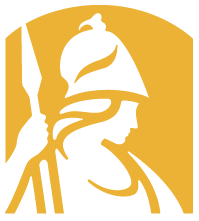Inaugural UAlbany Science Research Symposium Showcases High School Researchers Statewide

ALBANY, N.Y. (March 6, 2025) — Future scientists from across New York presented their original research at the University at Albany last week during the inaugural UAlbany in the High School Science Research Symposium.
The UAlbany in the High School (UHS) program allows qualified students from New York high schools to earn college credit. Offered as a bridging experience, UHS courses help students develop the skills and experience necessary for academic success in higher education.
For decades, UAlbany hosted the annual Upstate New York Junior Science and Humanities Symposium. With the event being moved to Rochester this year, UAlbany forged its own symposium with a similar format, featuring UHS students participating in the UAlbany Science Research in the High School program presenting their original scientific research before peers, teachers and esteemed judges.
“This inaugural event underscores our commitment to celebrating science research achievements in the many high schools that we serve within the UAlbany in the High School program, said Dean of the College of Arts and Sciences Jeanette Altarriba.
“Dozens of projects were presented, with an eye toward discussing new knowledge and findings driven by student interest and the hard work and efforts of all of those who helped to prepare them for this momentous occasion. We look forward to next year when we can again welcome students from across New York to participate.”
Leonard Behr, UHS's director of Science Research in the High School, is retiring this semester after more than 30 years at the University. He co-led last week’s symposium with Tim Lance, a UAlbany Distinguished Service Professor emeritus, president of the New York State Education and Research Network, and emeritus from NYSERNet.
“I was brought up with the belief that everyone is brilliant. It is only a matter of what gets brought out of you through circumstances and exposure. This kind of experience is invaluable for young scientists,” said Behr.
“These young researchers are working on hard problems with the help of their teachers and research mentors,” added Lance. “Through events like this symposium, we aim to engage with the students and let them realize their full potential.”
Rose Janicke, a junior at Saratoga Springs High School, was among the students presenting at the symposium.
Her research project, under the mentorship of Cheryl Andam in UAlbany’s Department of Biological Sciences, is focused on better understanding antimicrobial resistance, which makes infections harder to treat and increases the risk of disease spread.
“One of my friends encouraged me to apply to this program and it has been one of the best decisions I’ve ever made,” Janicke said. “I’ve wanted to go into pre-med for a while and originally focus on pediatrics, but my research on bacteria and infectious diseases has been really interesting. So now I want to study this more.”
Kairos Rawert, also a junior at Saratoga Springs, presented her research on the detection of gravitational waves, ripples in space-time that are created by cosmic events like colliding black holes or neutron stars crashing together.
“This study offered me a foundation of how the research process works,” Rawert said. “It was a rewarding experience being able to present my work in front of scientists and my peers. I would love to do it more as an undergraduate.”
Students and teachers interested in the UAlbany Science Research in the High School program can contact uhs@albany.edu.




